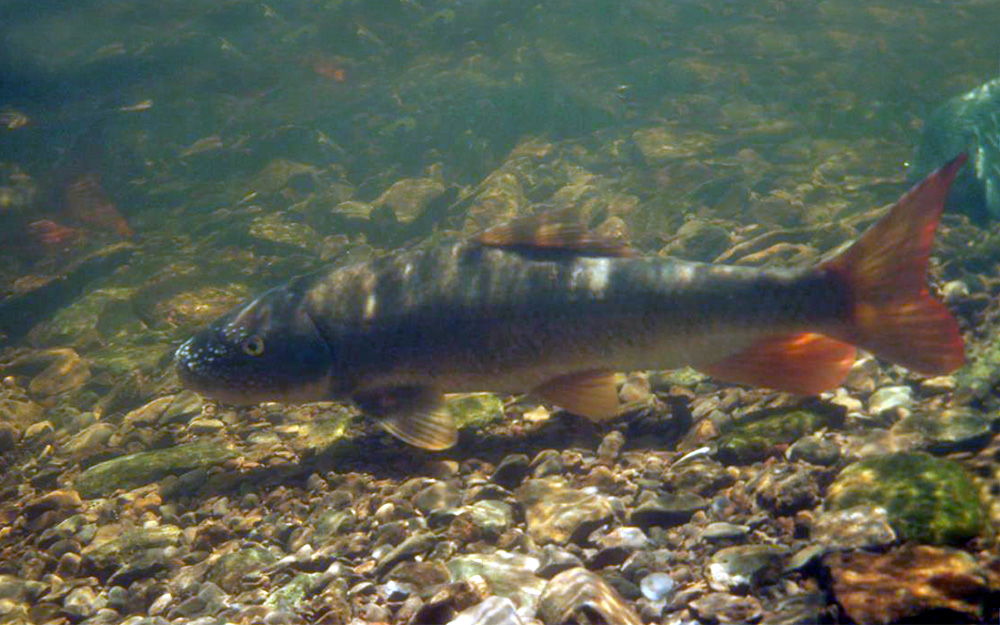River redhorse
(Moxostoma carinatum)

Classification
General data
The river redhorse (Moxostoma carinatum) is a species of freshwater fish endemic to the eastern half of the United States and southeastern Canada. Their weight ranges from 2-10 lbs. It is typically found in clear, large creeks and rivers, though it is sometimes also found in lakes. They are sometimes speared or caught with hook and line using crayfish or worms as bait.
A bottom-feeder, it feeds on mussels, snails, crustaceans and immature aquatic insects. Its common names include big-sawed sucker, river mullet, greater redhorse, redfin redhorse and redhorse sucker. It has the following characteristics:
Distribution
The river redhorse occurs throughout the central and eastern Mississippi River System and the Gulf Slope from Florida to Louisiana. In Canada, its distribution is characterized by disjunct populations in southern Ontario and Quebec as well as Alberta. This species has declined considerably over much of its range in the last 200 years. Populations still occur in the Grand, Trent, Thames, Mississippi, Gatineau and Richelieu rivers, and recent data suggest a wider distribution in the Ottawa River than previously documented. However, this fish appears to no longer exist in the Châteauguay and Yamaska watersheds and has declined dramatically in the St. Lawrence River.
Similar Species
The river redhorse resembles all redhorse species especially the shorthead redhorse (M. macrolepidotum) and the Greater Redhorse (M. valenciennesi). The river redhorse can be distinguished, although with difficulty, from most other members of the genus by its heavy pharyngeal arch with molariform teeth. Additional features that may distinguish it from other redhorse sucker species include entirely plicate lips and caudal peduncle scale count.














